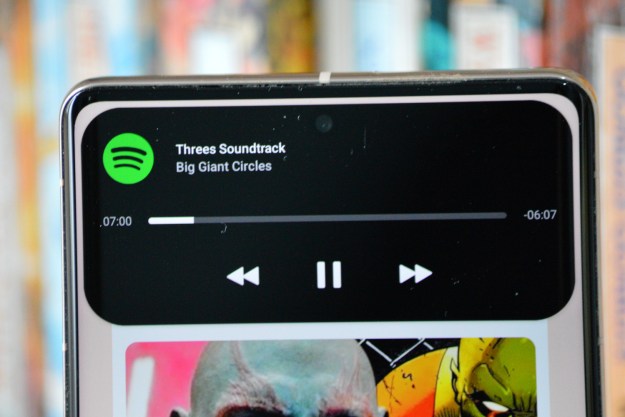Updated on 07-27-15 by Kyle Wiggers: Added news that the Axon would feature Corning’s antimicrobial Gorilla Glass, a smartphone first.
As we start our tour of the Axon Phone, we encounter a 5.5-inch, 2,560 x 1,440 pixel resolution display protected by Corning’s Gorilla Glass 3. It’s antimicrobial, a smartphone first — silver ions infused in the display glass kill up to 99.9 percent bacteria that come into contact with them.
Powering the phone is the oft-maligned Qualcomm Snapdragon 810 octa-core processor running at 2.0GHz, backed up by an impressive 4GB of RAM. ZTE promised the Axon Phone will be fast, but it won’t experience the overheating and performance issues that plagued the Xperia Z3+ and the LG G Flex 2 before it. ZTE’s work on the Axon phone will hopefully make using Android 5.0 Lollipop on the phone a trouble-free affair.
As far as build quality goes, ZTE’s Axon phone is encased in a premium all-metal build, with dual grills on the front. Don’t let the top grill fool you, however, because only the bottom one shoots out sound.
What sets the Axon Phone apart from the rest of the flagship phones out there, however, is its high-end specs and low price tag, as well as some great special features. Among the most impressive features is its ability to play back high-res 32-bit, 192KHz audio files, thanks to the inclusion of two dedicated audio chipsets. ZTE says that’s a first in the smartphone industry, as is the phone’s ability to capture loud or distant sound when recording videos. To help you listen to the Hi-Fi audio, ZTE will include a pair of JBL E13 in-ear headphones in the box when you preorder the phone.
Of course, to really take advantage of the phone’s high-res audio features, you’ll likely use almost all of the 32GB of internal storage. Unfortunately, there is no MicroSD card slot to expand upon that, so this could prove to be a problem for those intent on putting Hi-Fi audio files on the Axon phone.
The Axon phone’s dual-lens setup on the back is another stand-out feature. Much like the HTC One M8, the Axon Phone includes a second rear camera that gives it the ability to capture bokeh effects. The main rear camera is a 13-megapixel variant, and the one right above it is a 2-megapixel shooter. If you’re not one to add effects to your pictures, however, the main camera should be just fine. You’ll find an 8-megapixel camera on the front, which should take some stellar selfies.
To go along with the Axon Phone, ZTE announced the Axon Passport 1.0 program. In short, this gives the Axon Phone 2-year warranty coverage, as well as 1-year free shipping, and a 30-day buyer’s remorse period. In other words, buyers will have 30 days to return the phone and receive a full refund, no questions asked.
The Axon Phone is currently available for preorder from the phone’s website for $450, though the company has stated you can also order it from Amazon, Newegg, and eBay. ZTE is currently in talks with carriers, though there’s no word if or when that will finalize. We’ll keep you updated on that front here.
Finally, your color options include Phthalo Blue, Ion Gold, and Chromium Silver, and you’ll get the same exhaustive LTE band support regardless of color choice. In other words, you can connect to AT&T and T-Mobile LTE bands, as well as international carriers when traveling abroad.
When the Axon Phone was first revealed back in June, the situation was a bit confusing, since ZTE had no hand in the branding of the phone, even though it was clear the Chinese company was behind the phone. At the launch event, ZTE explained that it omitted its name from the launch materials to avoid preconceived ideas about the brand and the company as a whole. ZTE seems to be performing pretty well in North America, even if its brand isn’t as well-known as say, Samsung or Apple.
Stay tuned for our hands-on with the phone and our upcoming review!
Editors' Recommendations
- Apple just released iOS 17.4. Here’s how it’s going to change your iPhone
- Your Android phone just got an update that could save your life
- Here’s why your phone got an emergency alert today
- I tried to replace my GoPro with this new phone and its clever camera
- I did a Pixel 7a camera test — and it’s bad news for Samsung


